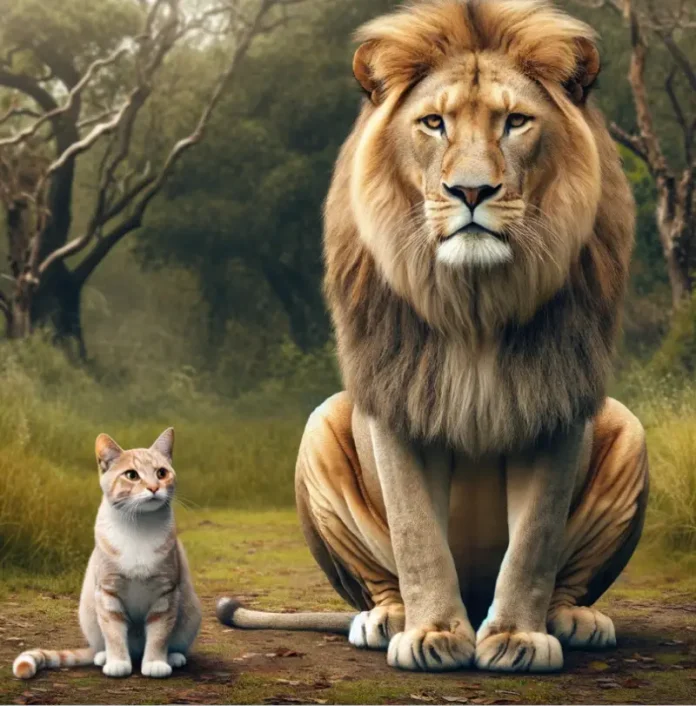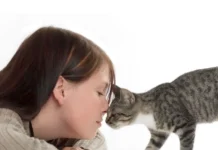The Intriguing Relationship Between Domestic Cats and Wild Cats
The prospect of domestic cats interacting with their wild relatives, such as lions and tigers, is captivating yet fraught with questions. While our household pets are known for their playful behavior and affectionate nature, they are significantly smaller and less ferocious than the big cats they share a family with. This leads to an important consideration: What would happen if these two groups crossed paths? Would they coexist peacefully or pose a danger to one another?
The Distinction of Size and Strength
Lions (Panthera leo) stand as some of the largest predators in the feline family, with adult males reaching upwards of 250 kg (550 lbs). In stark contrast, the average domestic cat (Felis catus) typically weighs between 4 to 5 kg (8.8 to 11 lbs). This size disparity underscores the potential risks for a domestic cat in the presence of a lion, even if the latter’s intentions are benign.
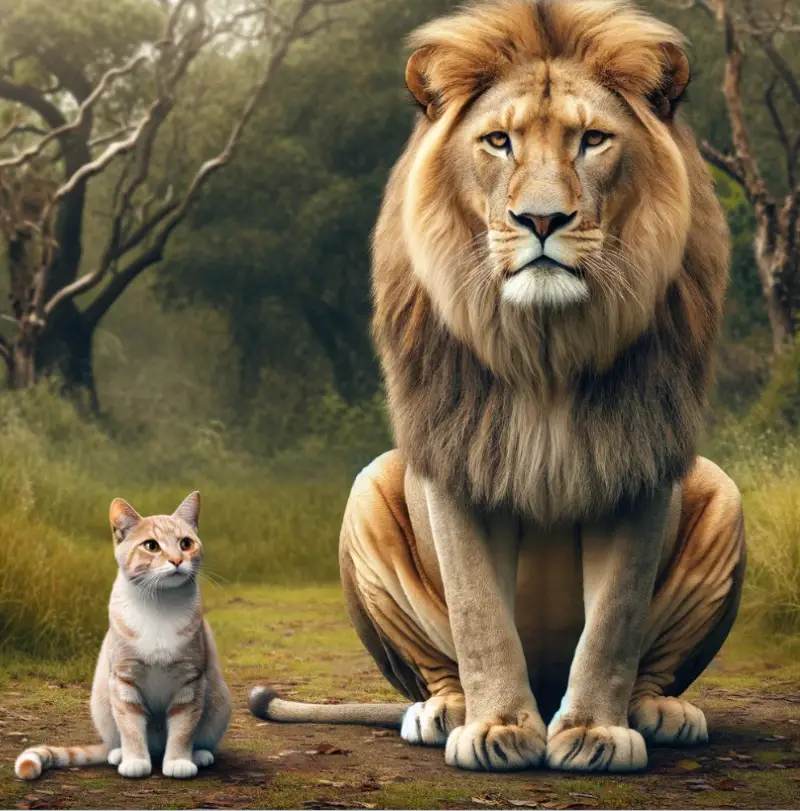
Predatory Behavior: An Innate Threat
Lions are apex predators with highly developed hunting instincts. They are likely to view smaller animals, including domestic cats, as potential prey. While domestic cats also exhibit hunting behavior, their instincts are geared toward capturing much smaller creatures, such as birds and rodents. Therefore, the mere presence of a domestic cat could trigger a lion’s predatory instincts, leading to perilous outcomes.
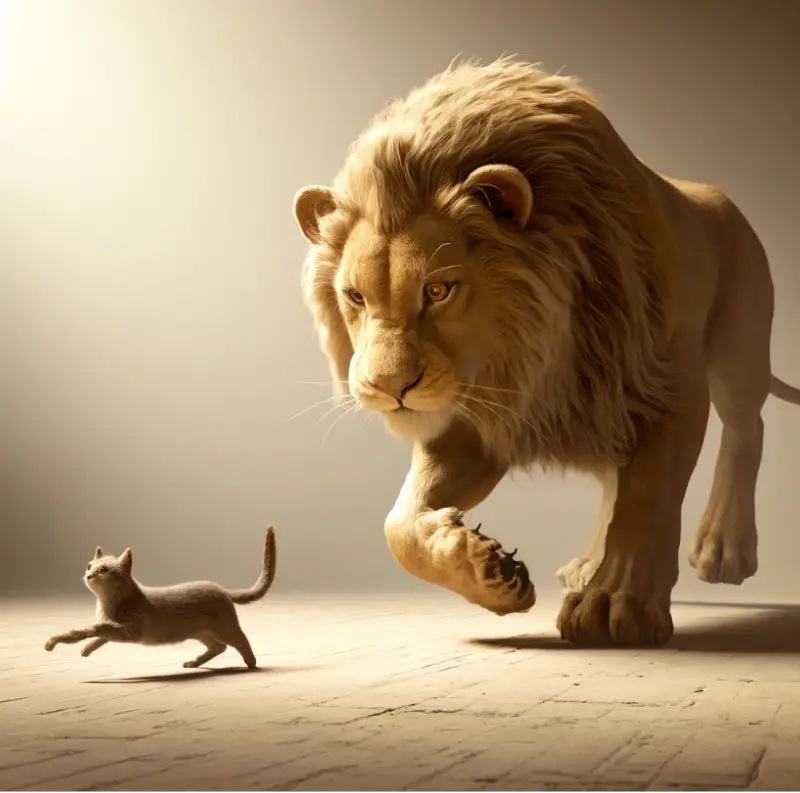
Social Structures: A World Apart
The social dynamics among lions further complicate these interactions. Lions live in social groups known as prides, necessitating complex social interactions and communication skills that domestic cats lack. Moreover, the physical dominance exhibited by lions in establishing social hierarchies could pose a significant risk to a domestic cat.
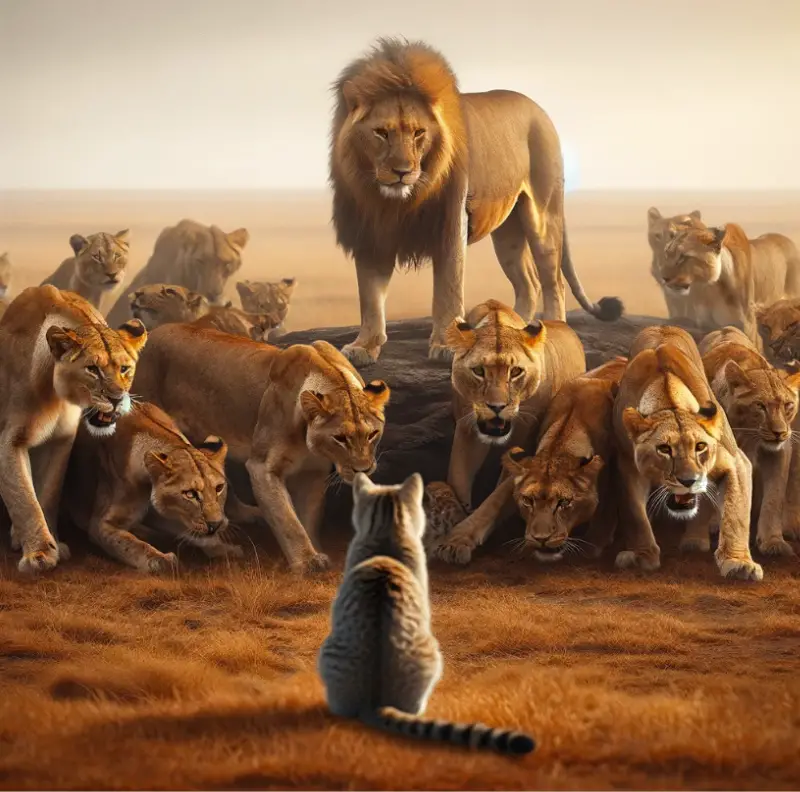
Territorial Nature: Different Scales
Both lions and domestic cats exhibit territorial behavior, yet the scope and management of their territories vary widely. While a domestic cat may assert its territory, this could provoke aggressive responses from a lion, which interprets territorial claims on a different scale.
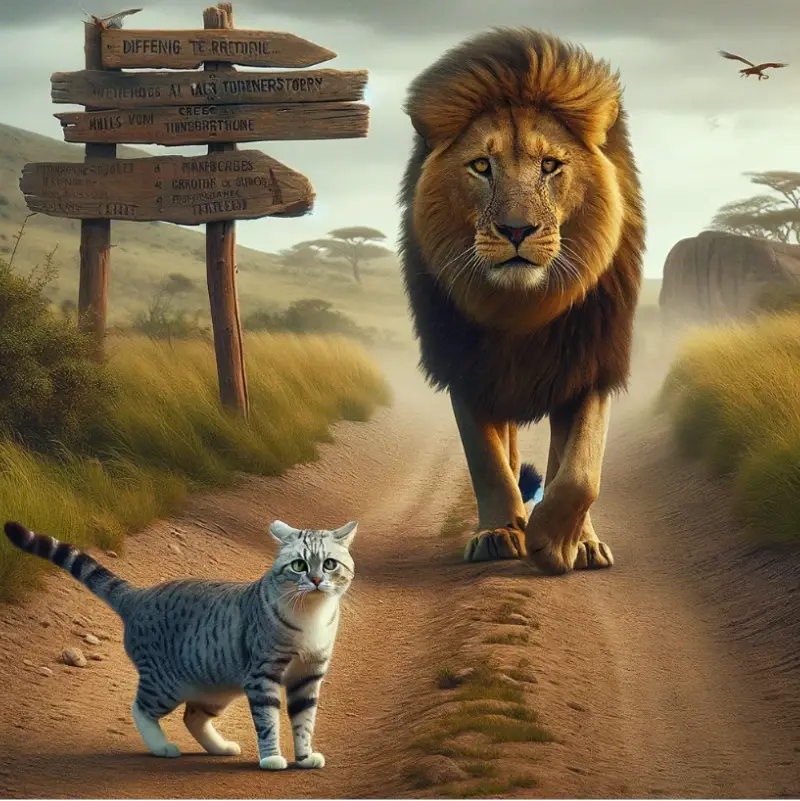
Health Risks: Disease Transmission
Another critical factor in the interaction between these two cat groups is the potential for disease transmission. Various illnesses can affect both domestic and wild cats, sometimes transmitting between species. In controlled environments like zoos, precautions can be taken to minimize these risks, but any direct exposure between domestic cats and lions could jeopardize the safety and health of both.

Summarizing Key Insights
While domestic cats and large wild cats like lions and tigers share a common ancestry, the evolutionary paths they have taken highlight essential differences. These variations, shaped by environmental adaptations and domestication, ensure that direct interactions between these two groups remain not only impractical but dangerous. For a deeper understanding of our feline friends, delve into our article: “Are House Cats Wilder Than We Think?“
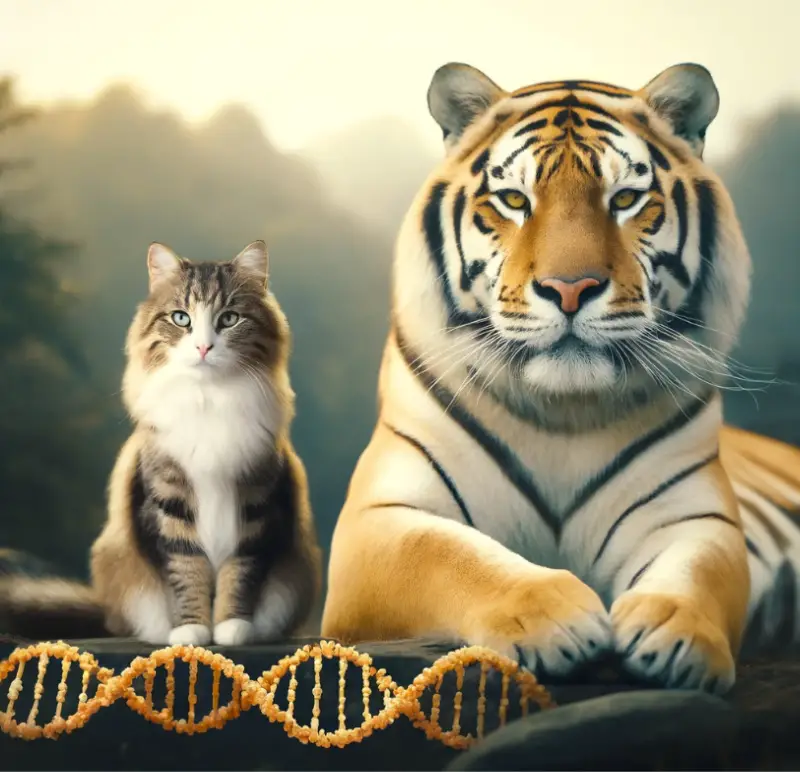
The striking similarities and critical differences between domestic and wild cats offer insights into their respective behaviors and societal structures, emphasizing the importance of keeping them separated for the well-being of all parties involved.


